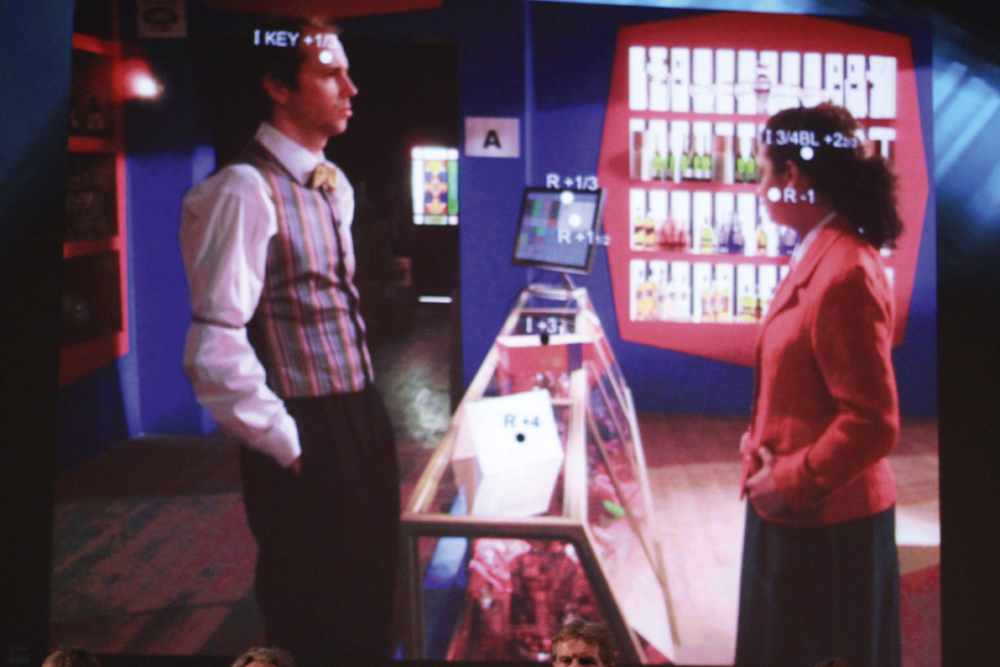
BSC Shoot Out

Fresh from the BSC evaluation test results day the conclusion is probably, predictably, that there isn’t one. After nearly a year of planning and execution the tests themselves were impressive and in some cases shocking. But such is the increase in image manipulation these days that you could find different results for each day of the week – something that was mentioned on the day. Having said that this article will try and encapsulate the results in some kind of coherent way because as an exercise in repeatable results, there were some trends. One being the majority of digital cameras turning skin green and the RED camera turning it ‘perma tan’ – another comment, this time from the BSC’s President.
It was two years ago that the BSC put themselves in the firing line and started to accumulate their film versus digital experiments and publish the results to their members. Then the opinion was that film wins hands down but digital should get better. Now as BSC president Sue Gibson explained they are in a climate of saving the future of film against the onslaught of different digital formats.
The premise was to take 18 different camera formats and put them through three different tests – daylight interior/exterior and night the same combination, close up and simultaneous exterior. All the cameras were to be set up by their manufacturer and all footage would be treated the same in post to level the playing field, render to 10-bit 2k Log DPX then grading referenced to Grey scale and Macbeth charts shot initially. The post work alone took five months to complete.
This of course makes the exercise not an aesthetic one but a technical one, another bone of contention. But what are we trying to learn here? What looks best in the best circumstance or what looks good under a certain umbrella policy? There have also been further discussions about the lighting, was it shot and lit for film? Does it matter? “We wanted to show you the differences, not hide the differences”, said Sue Gibson.
I don’t think there is an agenda here from the BSC as the watchword for the day was always ‘we are learning, let’s learn together’. There was however a pointed demonstration of de-grained 16mm with 35mm grain added back – it looked great – with the words ‘perhaps now you can afford 35mm’. There was no such equivalent option for HD but it was announced belatedly that the process can also work for digital. The process being Arri’s new Relativity suite of post algorithms.
It perhaps would have been a good idea to include some post processing for digital cameras. What about custom colour space conversions, anti-alias controls, grain insertion that adjusts the intensity and type of grain etc..
So what cameras and formats are we talking about? First we had 35mm and 16mm film both Kodak and Fuji and both 200 and 500 stocks. The cameras used were Arri 416 and 435. Then digitally there were Sony’s F35, the Panavision Genesis, Grass Valley’s Viper, Arri’s D21, the RED One, Panasonic’s 3700 P2 Varicam, Sony’s f900r, Silicon Imaging SI 2k, Panasonic HVX201, Sony EX3 and the ‘wild card’ the Canon EOS 5D MK 2 DSLR.
Cameras from over £100,000 to under £2,000 in the same test. Because of that glaring inequality groups were decided on with 35mm and large format digital formats being grouped together, 16mm and the SI 2k and other 2/3 inch cameras put together and then the smaller camera bringing up the rear.
PROCESS
To get an idea of how the results were presented please go to one of our online video channels at http://vimeo.com/channels/54335 [VIDEOS TAKEN DOWN DUE TO COPYRIGHT ISSUES] – you will see some audience sourced video of some of the tests and read some of the comments already left, bashing and supporting what we’ve shown.
You will see some of the interior and exterior footage with commentary from Sue Gibson, BSC’s current president and John Daly, BSC, who shot some of the footage.
The scene was tungsten lit to 2.8 for 200 and all cameras were set at 2.8 and exposure was controlled using NDs. The scene was classed as a wide shot with 25mm or 35mm lens with motion control shooting.
There is also an audio Podcast featuring part of the day with Sue Gibson’s ‘set-up’ speech on it at the start of this article. Sue explains exactly how the tests were prepared and it’s worth a listen to understand the thinking.
On the day the interior and exterior shots were very cleverly arranged in to the groups mentioned before but were also part of split screens that showed the cameras in direct comparison. Something the ASC apparently didn’t achieve in their recent tests – although the ASC did let the manufacturers control the post of the cameras, a point that became relevant later on in the day especially on the data cameras. They also employed producers to do a time and motion study, something the BSC promised they would bring figures to support some time in the future.
The interior and exterior night and day shots were on a set at Pinewood especially designed (see opening image) with visual trap doors for each camera and format to avoid like deep shadows and tough highlights to deal with.
Two actors were in the repeated scene wearing clothes again to try and catch the formats out, stripey jacket with spotted bow tie and an electric red jacket on the black girl, a jacket that should’ve made it to the auditorium to decide exactly what colour it was – such were the differences in its colour in the footage.
These shots were followed up by the close up tests – see the images on these pages – featuring a model on a dressed set who for two days looked straight in to the cameras seemingly without blinking. There was no motion control here but with a set with white curtain and bird cage in the background. The lenses were 75mm and 35mm.
The last test was outside at Pinewood with a unique rig which had sixteen cameras on it shooting simultaneously, quite a feat and very interesting not least for the impact of infra red on the digital cameras and the need for filtering solutions.
Sue had explained that the footage was present as a DCP – a Digital Cinema Presentation. They converted the final RGB files to XYZ universal colour space and then produced the DCP to be loaded on to the servers at the venue.
Unfortunately it was discovered after the event that the projector was scaling the footage as it was set up for 2.35 not the 1998×1080 DCP standard. What was needed was exact pixel mapping.
The day was then given over to case studies from some of those production’s crew which was something of an anticlimax as what we had seen was so interesting and there was certainly a need for more Q&A.
COMMENT
What struck many people were the differences between the formats, not a surprise you might say and exactly the point of the tests. But DoP Mike Southon was one to suggest that the differences were so pronounced that if he turned up with some of these results from a job that perhaps he wouldn’t get much more work afterwards. The point being the inconsistencies in the results were not a real world conclusion.
Some of the data camera results also came under attack such as the SI2k – the Slumdog camera. As the tests continued when they came to the SI results, Sue paused and explained that they had to increase the saturation of the SI2k to achieve the Macbeth charts but the colourimetry was still not right – you could see that for yourself!
Sue Gibson commented, “In order to get it to look the way it does it has 200% saturation, and it still doesn’t look right. I’m not sure why this was the case but it was just what we found. It can’t hold the highlights at all and it looks crushed in the blacks.”
The RED camera footage was also not as good as some commentators had seen and Sue again commented, “The same 25mm Cooke lens but I think you’ll see it has a different field of view, it’s a bit tighter. It’s not as wide as the 35mm with the same lens and it is billed as having a 35mm sized sensor.”
The post production of the RED footage came under discussion later as the colourist and editor Gwyn Evans and Torquil Dearden described how the cameras performed, “With the RED it was impossible to get it in to the colour space but the large cameras went in very quickly. The CCD cameras were the easiest as they came in DPX. The Data wrangling on the CMOS chipped cameras was very interesting and time consuming.” Torquil commented, “The Quantel now has the capability to ingest RED footage straight in. We elected to put them all in to DPX format. Initially when you pull in the RED material the Metadata which is stored at the time of shooting is used, in reality that had so badly clipped the top end and lost detail at the bottom end that we re-evaluated and I ended up having to ingest it three times until we had retained as much detail as possible. It takes about 17 seconds to import one second of full 4K resolution.”
Gwyn Evans went on to say that the SI 2K and Panasonic both had to be ingested three times as well before a good result could be attained.
The Canon 5D MkII didn’t really get a full crack of the whip as they hadn’t had the manual exposure upgrade and didn’t use any kind of viewfinder to reduce the errant focusing.
CONCLUSION
Having already said that there isn’t a conclusion to make, the feeling was that inevitably more questions were raised than answered especially about the treatment of digital data cameras in post.
It is early days for these cameras and their workflows but after the questions on wrangling you can see that the ASC’s decision to let manufacturers control the post was a wise one in the current technical climate.







